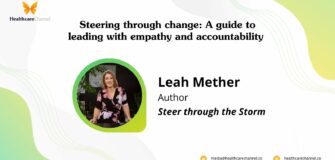Our older population will triple in 40 years. But a social insurance model won’t fix the aged care funding crisis
Share
Preliminary data from the 2023 Intergenerational Report shows Australia’s population aged 85 and over is set to more than triple over the next 40 years. This will exacerbate existing strains on the aged-care system.
The government’s Aged Care Taskforce is investigating aged-care funding options to develop a “fair and equitable” system, while exploring efficiency, affordability and sustainability.
The government will spend more than A$146 billion on aged care in the next four years. General tax revenue will cover that cost, mostly funded by individual income tax receipts. But the government is concerned general tax revenue won’t be enough to fund the expected growth in aged care, in the near future and longer term.
There are three primary options to increase aged-care funding. The government can either increase its contribution, ask consumers to pay more, or use a combination of both.
The need for more consumer contributions has dominated recent aged-care debates. The less asked, but more important, question is whether the general tax revenue model the government uses to fund aged care is an appropriate model to promote sustainability.
While a social insurance model is the main alternative, it won’t be the silver bullet we’re looking for to fix our aged-care funding crisis.
How would social insurance work?
A social insurance model would use either voluntary or compulsory contributions from worker salaries to cover the cost of aged-care services.
It could include a prior build-up of funds, where consumers draw on accumulated savings to purchase aged-care services. Alternatively, it could operate as a pay-as-you-go (PAYG) system, where consumers draw on worker contributions each year, with an understanding that workers will draw on future contributions when they require aged care.
The first social insurance model was established in 1883 by the first chancellor of the German Empire, Chancellor Otto von Bismarck. He wanted blue-collar workers to remain healthy and productive by providing access to health-care services.
The “Bismarck” model has since permeated throughout Europe, funding health-care systems in Germany, France, Switzerland and the Netherlands.
While this model works reasonably well in these countries, whether a social insurance model is right for funding aged care in Australia is debatable. How social insurance levies are applied matters to efficiency and equity.
Is social insurance efficient?
An efficient funding model collects and distributes revenue for the least cost possible. A social insurance model would require new legislation and a government agency managing reserves, increasing administration costs.
Less visible but more substantial funding model costs are from market distortions associated with the revenue collection mechanism such as personal income tax or a levy.
Whether a social insurance model is more efficient from a market perspective depends on how the government would otherwise increase general tax revenue.
The impact on efficiency from a social insurance model would be equivalent to an increase in income tax rates under a general tax revenue model. Both would reduce take-home pay and potentially reduce the incentive to work, for example, by reducing the willingness to work overtime.
Efficiency differences would occur if the government increased tax rates faced by businesses. This could distort business decisions, potentially reducing investment.
The size of the impact would depend on the size of the tax increase. The Victorian government introduced the mental health and wellbeing surcharge on payroll tax in 2022 to raise funds for improved mental health-care services. While business suggested it would harm growth, there is no indication this has occurred.
Is social insurance equitable?
Other differences exist between general tax and social insurance models when assessed against equity. An equitable funding model requires people with similar financial means to pay similar amounts, and those with greater financial means to pay more.
Differences primarily result from our ageing population. Under a general tax revenue model, current workers pay for current aged-care services, but may receive more and better quality aged care when older. They will pay less compared to their future cost of care.

It’s difficult to measure future aged-care costs. Shutterstock
A social insurance model that builds up funds may better match contributions with future costs. But this requires a big ask from workers, to simultaneously build up the fund for future aged-care costs and pay for current aged-care costs.
Future aged-care costs are also uncertain. Underestimating costs mean the government will still need to spend more on aged care. Overestimating costs means workers contributed more funding than needed, losing some opportunity to spend on other goods and services, such as holidays.
What else should the government consider?
A social insurance model is a departure from our broader tax system. The government does not ask workers to contribute to their future health-care costs, nor to future social payments such as the aged pension. Both are funded by general tax revenue.
A social insurance model that required a prior build-up of funds would also take years to establish. It would not help with current underfunding problems in aged care, which have provoked poor quality and provider financial distress.
There is no strong evidence to suggest social insurance is more efficient or equitable than a general tax revenue model. Like general tax revenue models, social insurance models are exposed to shifting political winds.
The best path toward sustainable aged-care funding is for the government and consumers to pay more. The problem of securing aged-care funding may lie less in the funding model and more in securing government commitment when fiscal priorities change.![]()
Henry Cutler, Professor and Director, Macquarie University Centre for the Health Economy, Macquarie University
This article is republished from The Conversation under a Creative Commons license. Read the original article.
Dr Henry Cutler is the inaugural director of the Centre for the Health Economy at Macquarie University, where he investigates the Health Economy at the macro level, with particular focus on the interdependencies of these systems with each other, and the broader economy.
Henry has led or co-authored over 80 health economics consultancy publications on a broad range of topics for federal and state government departments, government agencies, and Australian and international non-government organisations.
His research focuses on economic evaluation, policy analysis, and forecasting in health and human services using a variety of economic tools and modelling techniques. He undertaken major studies on health and aged care reform, private health insurance, hospital efficiency, pharmaceuticals, medical devices, blood products, integrated care, hearing services, health care workforce, and mental health care.
He has a PhD (Economics) from UNSW, where his research focused on increasing efficiency within the health care system by allocating government spending to areas most valued by society. Prior to Macquarie University, Henry was the national lead of KPMG’s health economics group, and led the Sydney health and social policy team at Access Economics. He has also been a senior economist at the Centre for International Economics, and spent eight years working in financial markets in Sydney and London.










